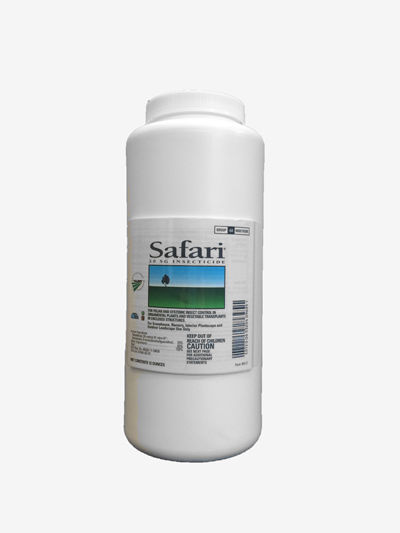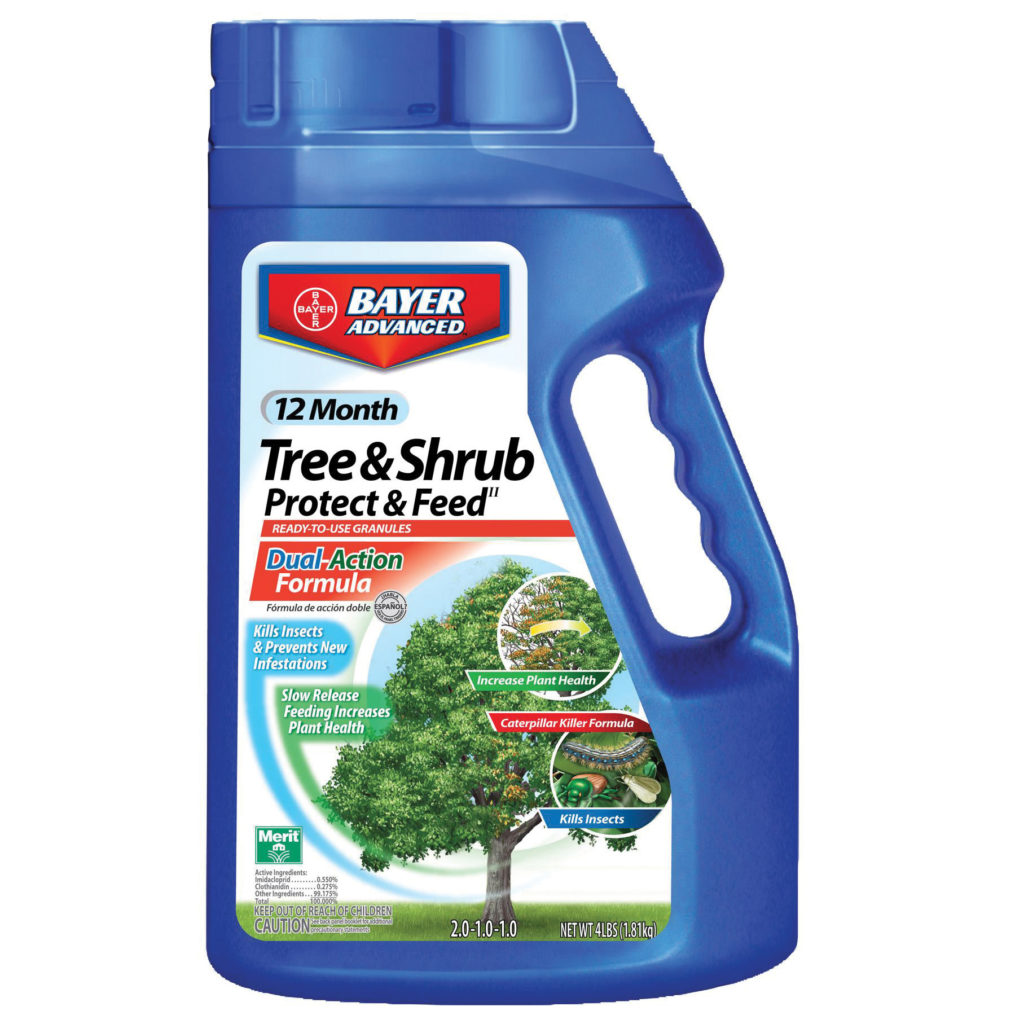White Flies
One of the most common questions we get asked here at the Southern California Hibiscus Society is about white flies and hibiscus. For many people in So Cal when they think of hibiscus they automatically include white flies in the same thought.
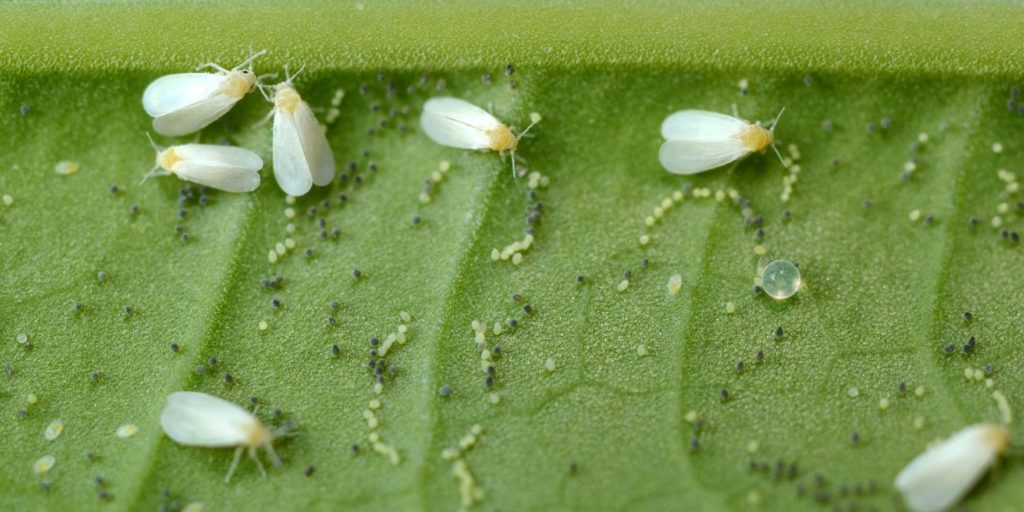
It appears that many people have tried growing hibiscus as part of their landscaping and after a year or two their hibiscus plants were getting infested with white flies. For many of them no matter what they tried to do to get rid of these little pests they just couldn’t make any progress and in many cases the infestations only worsened. In the long run the plants were in such bad shape that they were trashed and that was the end of any hope of having hibiscus as part of their landscaping plans.
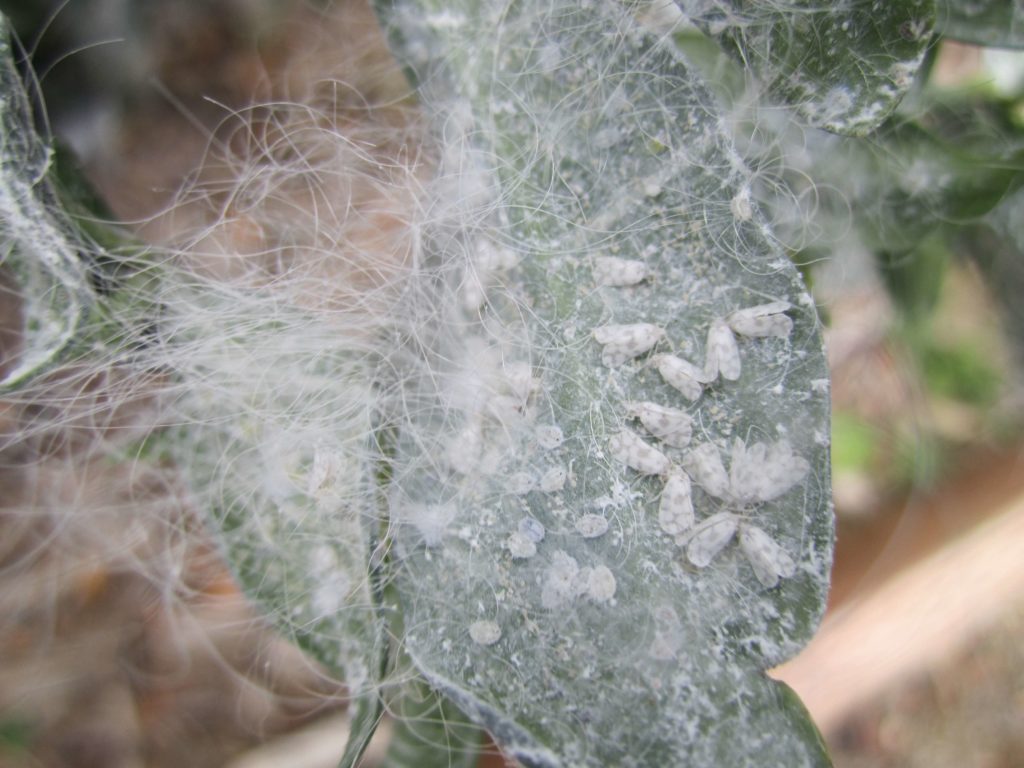
Here in Southern California we have two types of white flies to deal with. The first is the common white fly that you can see in the first photo. The second type we get is the Giant White Fly which is as the name implies an oversized version of the common white fly. The difference between the two is that the Giant White Fly makes that cotton-like mess on the undersides of your leaves.
Common White Fly Characteristics
White Flies are like most other pests your hibiscus will encounter as they are sap sucking pest that pierce the undersides of your leaves and suck out the plant sap and chlorophyll. Over time you will see the leaves on your plants start to turn yellow and fall off as the leaves become devoid of any cholorphyll and useless to your plant. When the white fly population becomes increasingly large they will continue this process until they have pretty much defoliated your entire plant and any emerging new leaves are immediately infested and degreened.
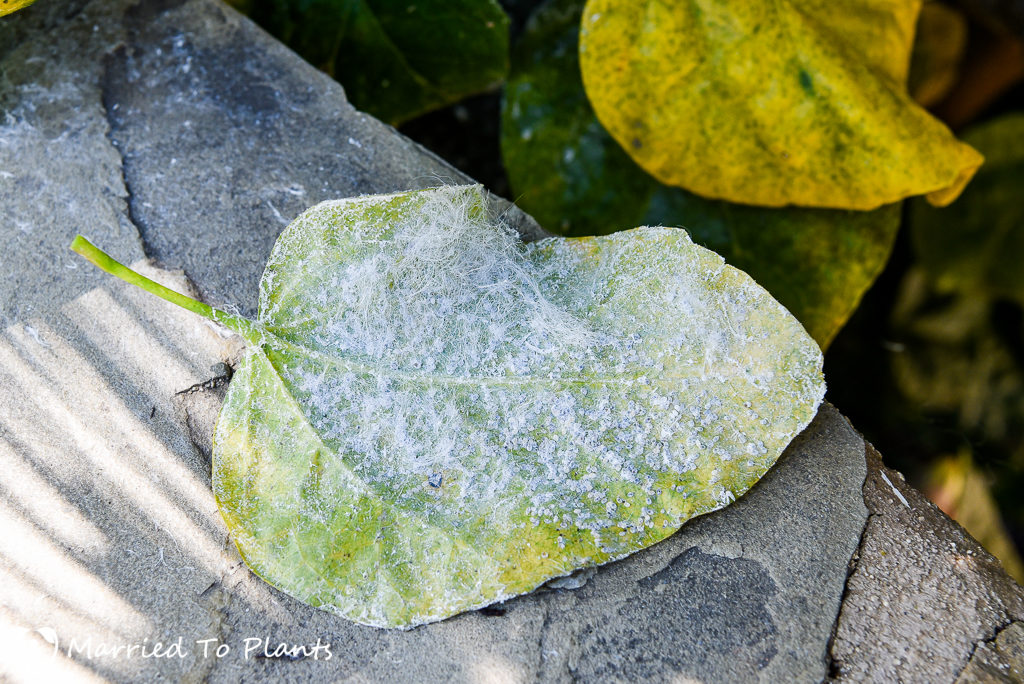
White Flies are also like many pests in that they do not like direct sun and any breezes over 5 mph. You will notice they tend to first start in protected places like on the backside of your plants up against a fence or where two plants are growing close together with no space in-between. These spots will be shady without much if any direct sunlight for the entire day. White Flies like to be left alone to quietly do their business and live on the undersides of your leaves. What is interesting is that if you try to get rid of them say through spraying a common store bought insect spray or smothering oil spray you will probably get most of them but a few always fly away in time and before you know it they are right back to the exact same spot. What is even worse is that they are quick to lay lots of eggs on many leaves so even if you are fortunate enough to spray them plenty more will be soon hatching. When white flies find a spot they like they do not forget about it and will keep on coming back to it over and over again. So here is a common scenario on how one might typically discover you have them in your garden:
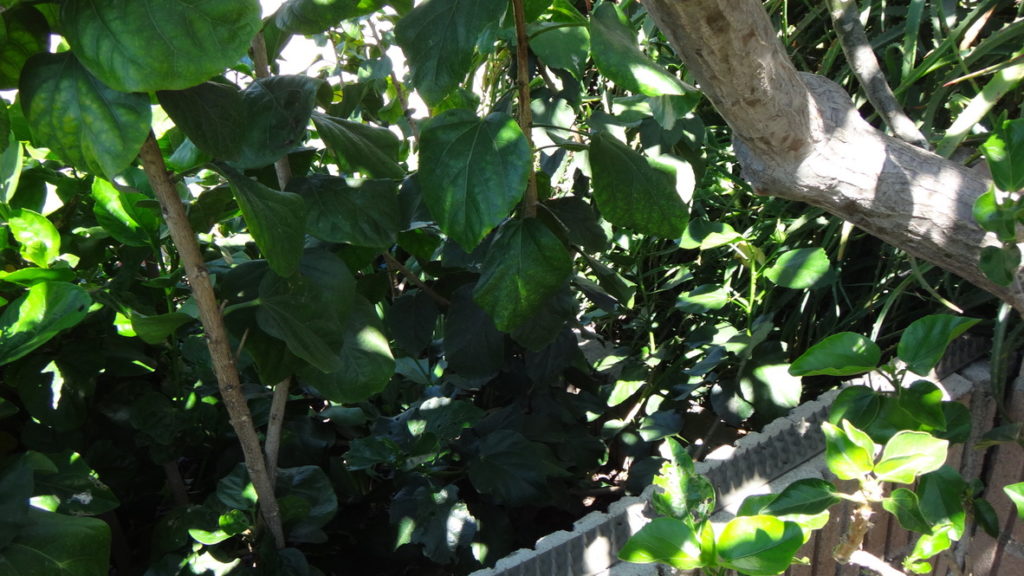
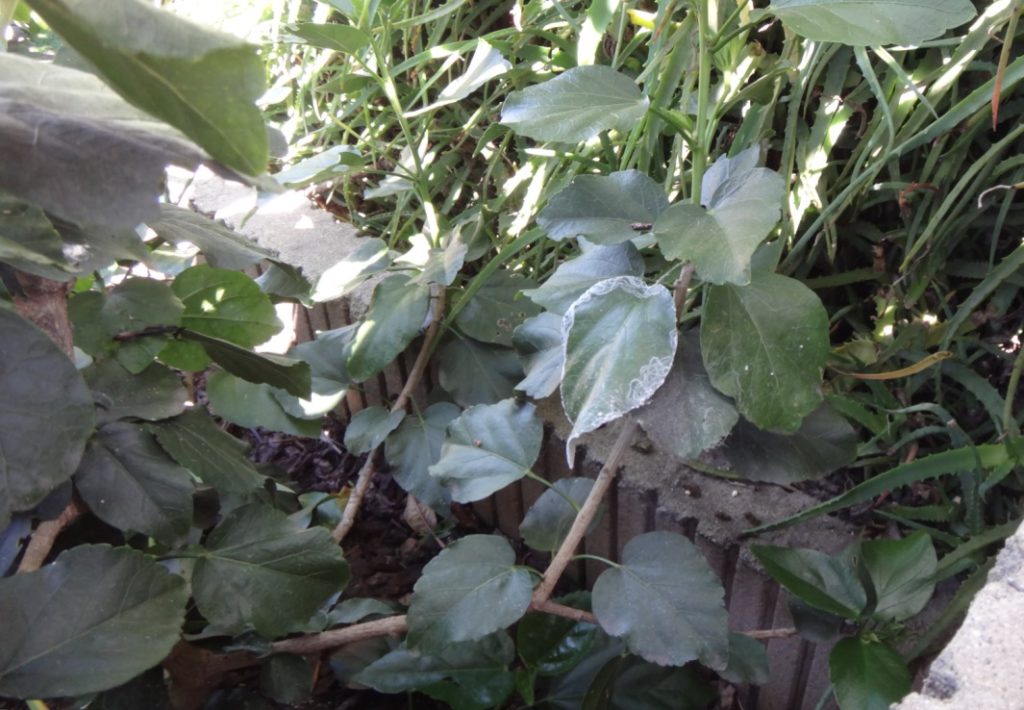
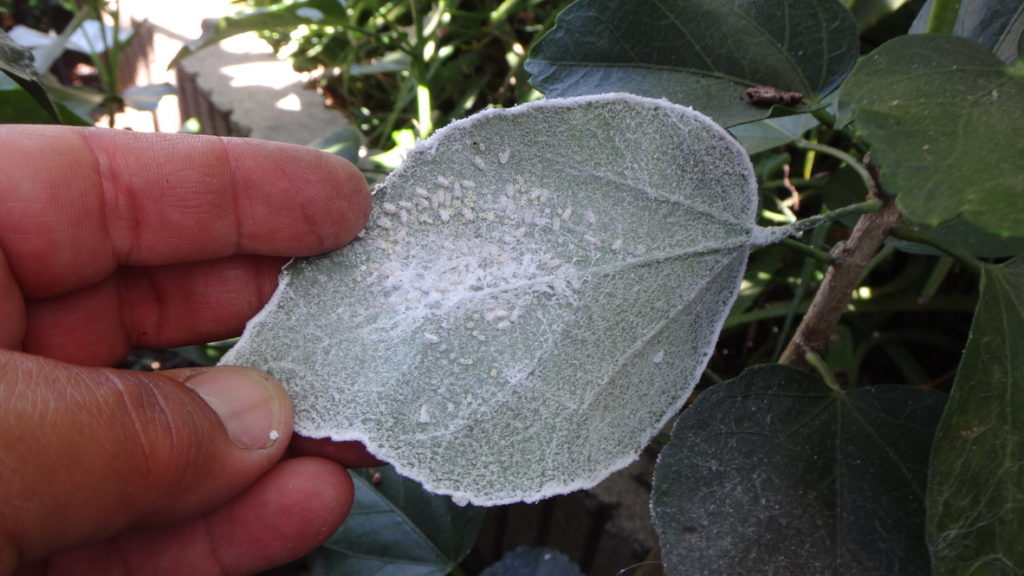
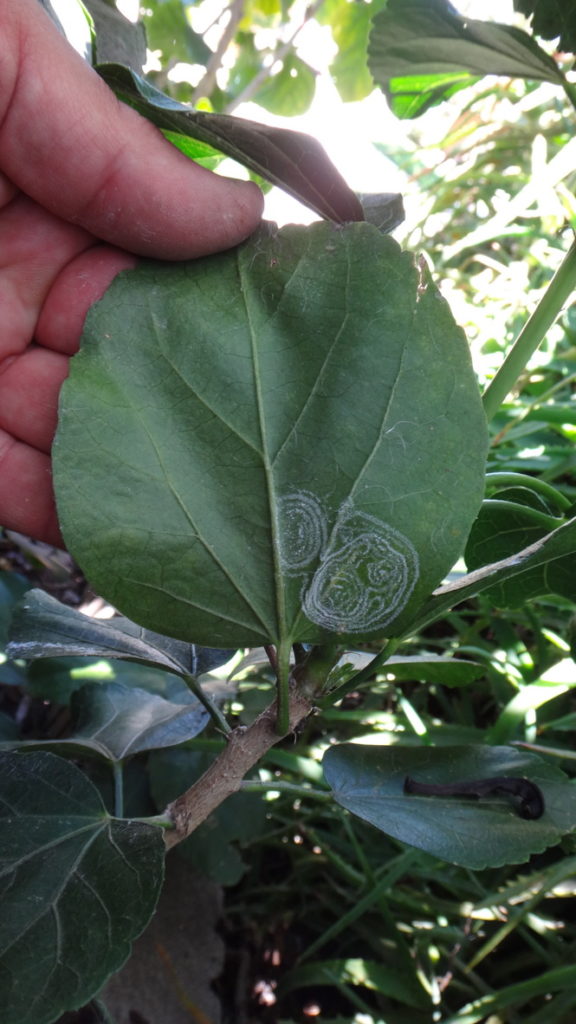
Even if you were to kill all the white flies there is a good chance they have laid eggs on the undersides of your plant’s leaves. So in a few weeks you will see more white flies and have to spray again. This cycle will continue without end as white flies are resilient in their ability to find ways to continue to survive in a location where they are under constant attack. Once they have found a spot in your garden and on your hibiscus they are challenge to totally eradicate.
Getting Rid of White Flies
With their incredible persistence to keep coming back to the same spot despite all your best efforts to check and spray for them everyday you will start to think that all those people who gave up on hibiscus were right. Don’t feel bad if you get them, it happens to us all and is another opportunity to learn how to better take care of your plants. Happily we’re here to tell you that there is a successful strategy to eliminate them and there are two answers to this problem.
Healthy Hibiscus Plants Are The Key
Hibiscus plants when they are in top shape will be much less likely to get a white fly infestation. Plants have their own natural defenses to keep pests in check and hibiscus are no different. When we talk to those that have had white fly nightmares in the past one common theme that emerges is that they treated their hibiscus plants like all other plants in their landscaping. That means they got the same water, same fertilizers if any and their gardeners were allowed to cut, whack and handle them like all other plants on their property. As you will see from our website hibiscus need special attention and have unique feeding and planting needs that differ from most other flowering plants. When these critical aspects are not applied to hibiscus, especially exotic hibiscus plants they will start to decline and become weak. Once in a weakened state the pests start to show up and the first that you will see are aphids in the spring and white flies anytime of year here in Southern California where the climate is easy going.
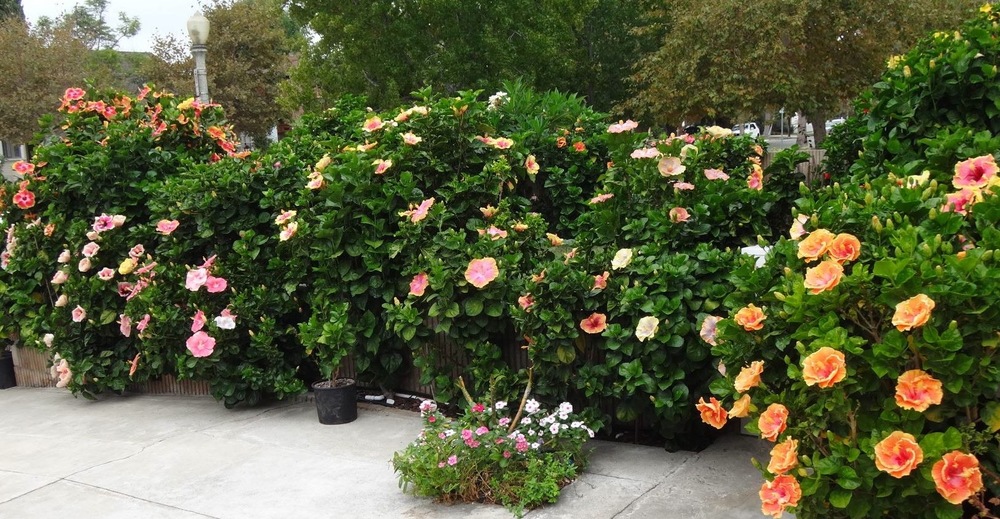
We hear from many of these people the challenging conditions their hibiscus plants were in and the lack of attention they got. Here are some examples of what we commonly hear: Planting hibiscus under pine trees, planting hibiscus under trees that completely shade them and/or drop leaves on them 24/7, growing them in the native clay soil that has no air in it when wet and is cement-like when dry, hibiscus up against a brick wall that is blasted by hot afternoon sun, in a pot on their back porch that only gets afternoon sun, on the corner of the driveway lawn where the gardeners’ weed wacker chews up the trunk every week, the list goes on and on….
Please check out our Pro Grower’s Section for great tips and guidance on how to properly grow hibiscus. Hibiscus Care & Growing
Permanently Eradicating White Flies
Even when your hibiscus plants are in top shape you still can have one or two plants that get white flies. We all have neighbors who have planted plants or trees that are white fly attractors and when close by they will eventually find their way to your plants. They will locate a quiet, well hidden spot and start their little inconspicuous colony until one day you accidentally notice them. When this happens you have to be aware that they will keep coming back to this spot and you will have to take action to stop them permanently.
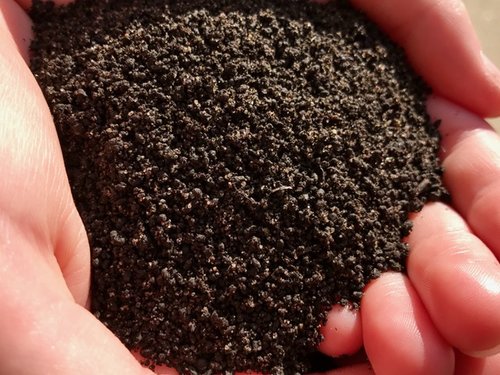
There are two ways to approach this problem and the first is an organic approach which is to add earthworm castings to your soil. Over time your plants will absorb the micro elements that the castings contain and your plants will start to repel pests. Our members have had mixed results with this approach. If you do decide to try this approach it is crucial that you do not add too much worm castings to your soil. When worm casting get wet they become incredibly dense and lose all air in it. This can lead to root rot for your hibiscus who need lots of air in the soil at all times. You only need to apply a dusting of worm castings every couple of months.
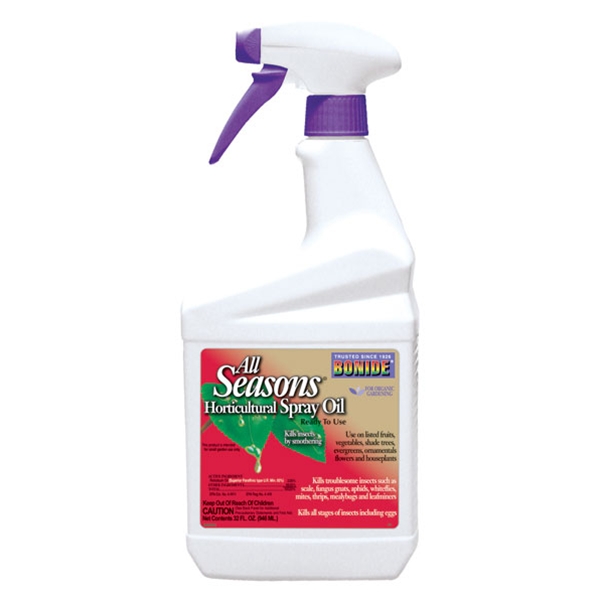
The other and more effective method and one of the few circumstances that we recommend a chemical solution is to use a systemic pesticide. We recommend to spray neem or horticultural oil on your plants first (only at sunrise or sunset to avoid burning the leaves with the oil) and then use a granular pesticide like Bayer Tree & Shrub or Safari. Many of our members have found that Safari works the best and is superior since it is ready to mix into water where Bayer Tree & Shrub are granular and are sprinkled around the base of your hibiscus. This will take multiple waterings to break it down and additional time to take effect.
Like the worm castings it will take 2-3 weeks for it to be absorbed and in sufficient quantities in your plant’s sap to start killing off the white flies. So you should spray your plants when you see white flies until the effects take hold. Once the systemic is working it will not only kill any surviving white flies but also any that hatch from unseen eggs which there always are. These granular systemics last 2-3 months on average which should cover the egg laying/hatching cycle and permanently end their infestation on your plant.
